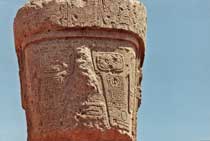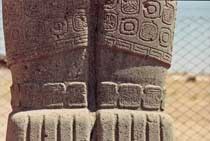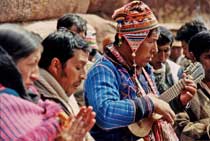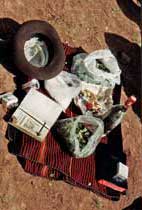Aymara
The Aymara are a native ethnic group in the Andes and Altiplano regions of South America;
about 1.6 million live in Bolivia, Peru, Northern Chile, and Northwestern Argentina.
They lived in the region for many centuries before becoming a subject people of the Inca,
and later of the Spanish.
The Aymara flag; Wiphala consists of seven colored stripes, each representing a meaningful aspect of life for the Aymara people. Red signifies the Earth and the Andean man, yellow signifies energy, green represents natural resources, and blue represents the heavens.



Tiawanaku (Bolivia) was once the capital of the Aymara,
a highly advanced pre-Incan society.
Many gather each year in Tiawanaku to watch as the sun's rays shine through the gates of the Kalasasaya temple and illuminate the ancient city's ruins.

Coca plays a profound role in the indigenous religions of both the Aymara and the Quechua,
and in more recent times it has become a symbol of cultural identity.
Aymara have grown and chewed coca plants for centuries, and used its leaves in traditional medicine as well as in ritual offerings to the sun god Inti and the earth goddess Pachamama and in the ritual curing ceremonies of the yatiri.
The elegant Aymara Chola dress which is an icon to Bolivia
(bowler hat, Manila Shawl, heavy pollera, skirts, boots, jewelry, etc.)
was born and evolved in
Chukiago City and it is clearly not provincial but urban.
Källor: http://en.wikipedia.org/wiki/Aymara, http://news.nationalgeographic.com/news/2007/06/photogalleries/wip-week34/photo5.html
© devsam.se



